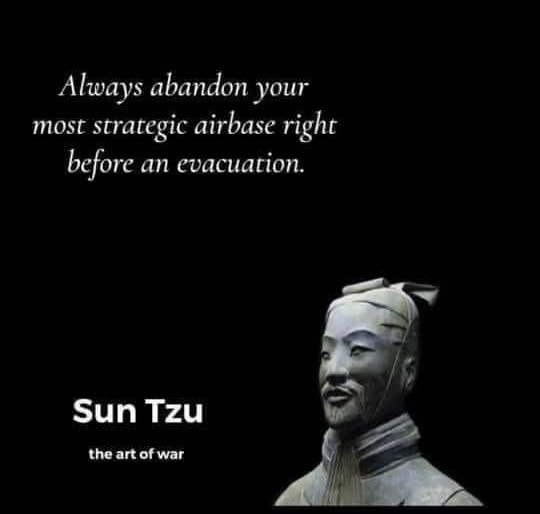Abbey Gate, Hamid Karzai International Airport, Kabul, Afghanistan — Aug. 26, 2021
The crowd was packed shoulder to shoulder. Every man, woman, and child shouted and waved pieces of paper — their contents indiscernible — in frantic attempts to gain the attention of the U.S. Marines and Air Force special operators standing on the wall above them. The promise of a new life lay just beyond the Americans guarding the gates.
Sunset was less than an hour away, but the temperature exceeded 90 degrees Fahrenheit, and the air was filled with the stench of sweat and human excrement from the desperate souls who had been waiting outside for days with nowhere else to relieve themselves. There was no respite other than a dry wind periodically blowing from east to west, away from the gate and down the canal full of civilians struggling to shove their way to the front.
Most of the crowd had no reason to be there. They had no connection to the U.S. government and no legitimate claim to U.S. protection. Many had remained on the sidelines during the decades-long fight against the Taliban. But most of them posed no active threat, either. They knew that Afghanistan’s U.S.-backed government was no more and that Sharia law enforced by the Taliban was on the horizon, and they desperately wanted to find a way out. Some had shown up because they had sincerely believed social media posts saying that the Americans would take anyone who wanted to leave.
For men such as “Amir,” the others’ motives didn’t matter. He had a right to be there, and he was trying to push through the throngs to take his wife and four children to safety. He had served as an interpreter for U.S. special operations units and the Defense Intelligence Agency (DIA) for nearly a decade. As such, he had an advantage over the hordes holding up clearly forged “admission documents.” U.S. troops were looking for him and had given him a call sign to confirm his identity. The U.S. veterans and intelligence operatives he’d served alongside, now back in the United States, had arranged it.
Amir could see Abbey Gate. He took a picture of the troops standing on the wall, so they’d know where to look, and another of the call sign he’d been told to paint on a placard: PALE RIDER. Then he took one more of his two sons and two daughters standing below him in the crowd. His younger son stood on the far left of the frame, and his two daughters stood on the right. His older daughter, six years old with soft brown eyes, gazed directly into the camera with an inquisitive smile. His younger daughter, the baby of the family, was distracted by the ongoing commotion and blissfully unaware of the moment. Between his younger son and daughters stood his oldest child, an 8-year-old boy with large eyes, tousled hair, and a troubled expression. He seemed to be the only one who realized that things weren’t OK.
At 5:30 p.m., Amir sent the photos to his handlers in the United States, who in turn would relay them to the troops waiting for his family. His family was a hundred feet away from freedom. The U.S.-based operatives acknowledged his message and replied with further instructions. But Amir’s transmissions went silent.
A few minutes later, the 3rd platoon of Echo Company, 2nd Battalion, 1st Marines (known as “2/1”), gathered 1,250 feet away for a group photo. In less than an hour, they’d begin their final shift at Abbey Gate. Their platoon sergeant tried his best to capture a moment to commemorate what they’d endured together. He took a few shots, then told the platoon to turn 90 degrees and face toward the gate, where the fading sunlight offered the best picture. The Marines first saw a flash of light, then felt the concussion of a blast in their chests. For a few seconds, everyone remained frozen in place while their brains attempted to process the sensory overload. Reality set in as body parts started raining down on the cement around them. The entire platoon sprinted toward the gate.
By nightfall, military officials announced that 13 U.S. service members had been killed in action in a suicide bombing at the entrance to the airfield: 11 Marines, a Navy corpsman, and an Army staff sergeant from a special operations unit. At least 170 civilians were killed in the blast as well. Amir’s oldest son was among them.
***
The deaths of the 13 American heroes of Abbey Gate — and those of the innocent civilians they were attempting to save — were neither inevitable nor the product of good-faith decisions poorly executed. The same goes for the thousands of Americans and tens of thousands of Afghan allies left behind in Afghanistan on Aug. 30, 2021. Those outcomes were caused solely by the Biden administration’s toxic combination of ignorance and self-assurance.
The wisdom of the overarching decision to withdraw U.S. troops from Afghanistan is immaterial. Plenty of Americans — and plenty of Afghanistan veterans — hold differing views on that topic in good faith. No matter which side you choose in that debate, one thing is painfully clear: Things didn’t have to turn out the way they did.
And unlike the tens of thousands of Americans and Afghan allies abandoned in Afghanistan on Aug. 31, 2021, the consequences of the administration’s failures in Afghanistan have not remained in Kabul; they’ve unleashed a dangerous new global dynamic that will be felt for some time to come.
This is the prologue from “Kabul: The Untold Story of Biden’s Fiasco and the American Warriors Who Fought to the End” (Center Street, Aug. 15).
